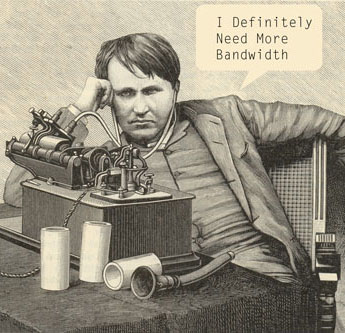By: John Shepler
While it’s evident that we exist in a connected world, not everyone enjoys the optimal level of connectivity. Some areas remain underserved, lacking sufficient bandwidth. So, what can be done if you find yourself in such a situation?
 Don’t Worry, Broadband Exists!
Don’t Worry, Broadband Exists!
In the past, broadband access was limited to specific areas, leaving many with only dial-up connections. Fortunately, the situation has significantly improved, with broadband internet access now available in most places. The key considerations are the type of broadband service offered and its cost.
Fiber Optic: The Superior Bandwidth Solution
Fiber optic cables are poised to dominate the future of connectivity. Their unparalleled capacity surpasses all alternatives. Transmitting 10 Gbps over copper wires is feasible within a building but impractical over long distances. In contrast, fiber optic cables handle this effortlessly, with a single strand and laser achieving this speed, which can be amplified tenfold using Wavelength Division Multiplexing (WDM).
Fiber’s Reach
Despite fiber optic cables being prevalent along highways, railroads, and pipelines, access points to this infrastructure are limited, making them appear less widespread. However, this is changing due to the increasing bandwidth demands of consumer and business applications, especially cloud computing, which requires a robust connection.
Fiber and Mobile Synergy
The rise of mobile broadband, particularly the shift to 4G and 5G smartphones, demands significant bandwidth. Fiber optic cables play a crucial role in delivering this bandwidth to cell towers, leading to faster wireless speeds and broader fiber availability.
Fiber Optic Service Options
SONET, the traditional fiber optic standard, remains relevant for long-haul networks. However, Carrier Ethernet, an extension of LAN-based Ethernet, offers a more suitable solution for businesses. This technology allows seamless connectivity across various distances by simply plugging into the network.
Carrier Ethernet offers two variants: Ethernet over Copper, providing lower speeds around 10 Mbps, and Ethernet over Fiber, which starts at 10 Mbps and can scale up to 10 Gbps and beyond, ensuring ample bandwidth as your business expands. Scalability is another advantage, allowing you to effortlessly upgrade your bandwidth without significant equipment changes.
Alternatives When Fiber is Unavailable
While fiber availability expands rapidly, there might be situations where it remains unavailable. In such cases, T1 lines, offering a reliable 1.5 Mbps connection, can suffice for businesses with lower bandwidth requirements, such as handling emails, web browsing, and online orders.
Exploring Wireless Options
Wireless connectivity has advanced significantly, with cell towers now capable of providing broadband to fixed receivers. This option suits businesses with low data usage, as exceeding data limits often leads to additional charges or service limitations.
Satellite as a Last Resort
Satellite internet serves as a reliable option in remote areas. Although latency remains a concern due to the satellite’s distance, advancements have led to improved bandwidth, offering speeds between 5 to 15 Mbps. However, usage limitations and potential latency issues make it suitable for basic internet needs rather than high-bandwidth applications.
Finding the Right Broadband Solution
Several broadband options, including fiber, T1, cellular wireless, and satellite, cater to diverse needs. The availability of these options often varies depending on the location. To determine the best fit for your requirements, it’s recommended to obtain quotes from multiple service providers. This will provide insights into available services and help you make an informed decision.
Note: Products with the humorous theme “I Definitely Need More Bandwidth” shown on this page are available through the Gigapacket Zazzle Store.

